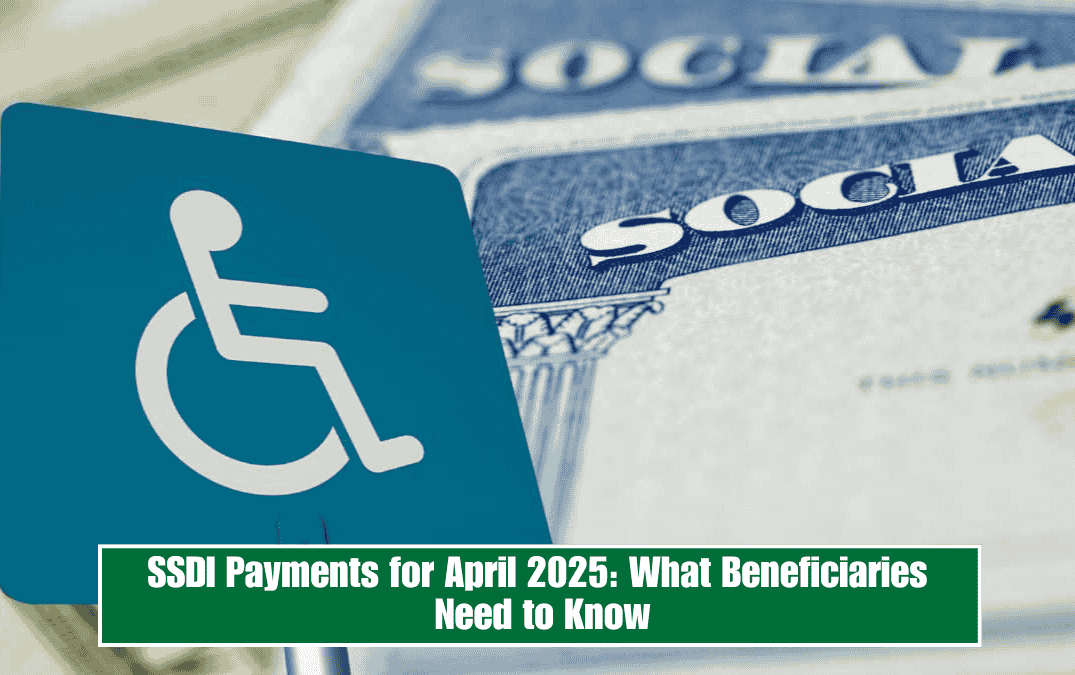Social Security Disability Insurance (SSDI) is a program in the United States that gives monthly payments to people who can no longer work due to serious health problems. These payments are managed by the Social Security Administration (SSA). In April 2025, people who were born between the 21st and 31st of any month will receive their payments on April 23, as per the SSA’s official calendar.
Let’s understand how the payment system works, who can get SSDI, how much they can receive, and what medical conditions are most often approved.
How SSDI Payments Are Scheduled
Every month, SSDI payments are made in three groups, depending on the person’s birth date. This system has been in place since 1997 to make the process faster and smoother for the millions of people who depend on it.
If your birthday is from the 1st to the 10th of the month, you get paid on the second Wednesday — in April 2025, that was April 9. If your birthday falls between the 11th and 20th, your payment arrived on April 16. And if you were born between the 21st and 31st, you’ll receive your SSDI payment on April 23.
These dates do not change based on the amount you receive or any other condition — they are only based on your birth date.
SSDI Payment Amounts and COLA Adjustment for 2025
For 2025, the highest monthly SSDI payment is $4,018. This amount includes a 2.5% cost of living adjustment (COLA) added in January 2024. COLA is a yearly increase that helps payments keep up with rising prices due to inflation.
While COLA is meant to help people afford basic needs like food and rent, some experts say it is not always enough to cover real cost increases, especially in healthcare or housing.
Who Can Qualify for SSDI?
To get SSDI, you must meet some strict rules:
You must have worked for at least 10 years and paid Social Security taxes during that time. You also need to have a serious, long-term disability that stops you from working. The disability must either last at least 12 months or be expected to cause death.
Temporary health issues or partial disabilities that do not stop someone from working full-time are not covered. The SSA usually approves serious diseases such as advanced cancer, multiple sclerosis, or serious nerve damage.
In 2023, only 35% of first-time applications were approved. This shows how strict the rules are.
The Five-Step SSDI Approval Process
SSDI eligibility is checked through a five-step process:
First, SSA checks if the person is currently working and earning above a certain income. Then, the medical condition is reviewed to see if it matches one listed in SSA’s “Blue Book” — a guide of approved disabilities.
If it’s not listed, the SSA checks if the condition is serious enough to stop the person from doing their previous job or learning a new one. Only about 28% of people who appeal after being rejected are successful. This process is designed to prevent incorrect approvals but is often criticized for being too complex.
Common Medical Conditions Approved for SSDI
According to SSA data for 2024, most SSDI approvals are for:
- Musculoskeletal issues (33%) like serious back injuries or arthritis
- Heart-related conditions (18%)
- Nervous system disorders (15%) such as epilepsy or Parkinson’s
- Mental health conditions (14%) like depression or schizophrenia
For each health problem, the SSA needs detailed medical proof. For example, if someone has multiple sclerosis, they must show that it causes ongoing problems with movement or feeling.
Even if a condition isn’t listed in the Blue Book, SSA can still approve it after checking how much the condition affects the person’s ability to work. They may use doctor’s reports and work records to make this decision.
SSDI payments are an important financial support system for Americans who can no longer work due to serious disabilities. In April 2025, people born between the 21st and 31st of any month will receive their payments on April 23. While the maximum benefit is $4,018, actual payments vary based on work history and medical condition.
Getting approved for SSDI isn’t easy, as the process is detailed and strict. Still, for many people facing long-term health challenges, SSDI can make a big difference in their lives. If you or someone you know might qualify, visit the official SSA website to apply and learn more.















